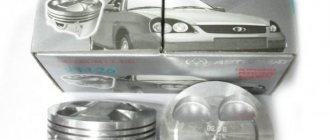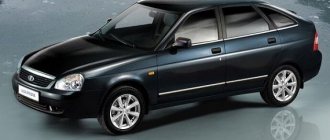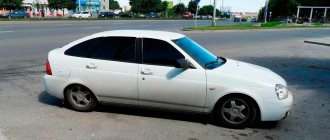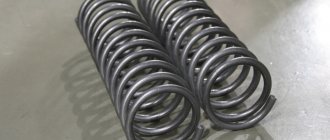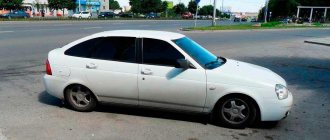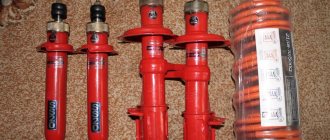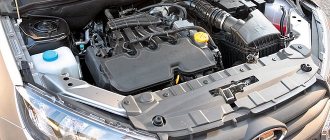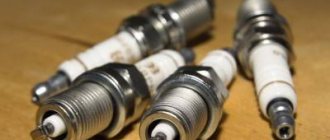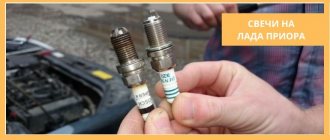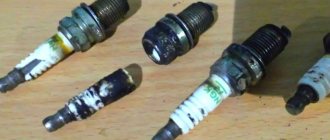It is possible to repair the engine after a broken timing belt, but you will have to spend a lot of effort, money and time on this. Therefore, many car owners do not wait until the belt breaks and the pistons meet the valves, but immediately install other, protected pistons. "Priora" with similar parts works in the same way as with factory ones. But the risk of breakdown due to a broken timing belt is reduced to almost zero.
Now there are several manufacturers that produce spare parts for this engine, including pistons. "Priora" is equipped with products from Russian, "STI" and "Avtramat" from a Ukrainian manufacturer. Let's see what these products are.
general information
The piston in an internal combustion engine is designed to transmit rotational energy to the crankshaft. This energy is produced by combustion of the mixture. When a mixture of air and gasoline explodes, the gases expand. The latter press on the surface of the part and push it. During operation, the piston surface experiences high thermal loads. The pressure in Priora engines can reach 65-80 bar.
During operation, the Priora pistons accelerate at some intervals to a speed of 100 km/h and then slow down to zero, while the operating frequency at 6000 rpm is 200 Hz. When the fuel-air mixture burns, heating in the chambers can reach 1800-2660 degrees. This is several times higher than the temperature at which metal melts. As a result, the strength of the alloy decreases. Various stresses arise in the piston body due to sudden temperature changes, and in addition, stress from pressure and inertia is added during acceleration-deceleration processes at high frequencies.
Thermal clearance of piston rings
PCs are spring discs with one cut - when installed on the piston, they expand, and in the sleeve they are pressed tightly against its walls. In order to achieve the greatest compression of the working consistency, the walls of the cylinders must be very smooth (without flaws), and the shape of the internal cavity must be completely round. On the piston, the PCs are located in special grooves; however, they are not seated tightly, and on a cool piston they move freely in the grooves.
Piston rings have thermal clearances:
The gaps must certainly be certain; if they are more or less than the required value, the piston group will quickly fail. One should take into account the fact that when heated, the metal expands, and if the thermal gap PC is very small, the piston group will begin to overheat. With huge gaps, density is not ensured, and power losses occur.
For passenger cars, the following gaps are usually installed:
- between the grooves and the PDA - from 0.02 to 0.08 mm (for the upper ring the gap should be slightly larger);
- between grooves and MPC – from 0.05 to 0.06 mm;
- at the junction - from 0.25 to 0.5 mm.
As wear occurs, the gaps in the PC increase, and they should not exceed:
- between the ring and the groove – 0.15 mm;
- at the junction – 1.0 mm.
Engines of the following types are installed on VAZ-produced cars:
- 2101/2103/ 2105/2106 (VAZ classic);
- 21213/21214/2130 (Niva);
- 2108/21083 (VAZ 2108-09-099);
- 2111/2112 (VAZ 2110-11-12);
- 21114 (VAZ 2113-14-15);
- 11186 (LADA Granta);
- 11194 (Lada Kalina).
There are also many other modifications of internal combustion engines, all VAZ engines are four-cylinder in-line, with a total number of valves of 8 or 16. VAZ engines have several standard cylinder sizes:
For each size, a repair increase of 0.4 and 0.8 mm is provided; factories produce repair pistons and rings of the first and second repair sizes. Piston rings with a diameter of 76 millimeters are available for engines:
The first repair size PC for these motors is 76.4 mm, the second repair size is 76.8 mm. Pistons, as well as 79 mm piston rings, are produced for internal combustion engines:
All these motors also have two PC repair sizes - 79.4 mm (first repair) and 79.8 mm (second repair). The most common PC size is 82 mm; many modern VAZ cars use a piston group of this exact size. Piston ring diameter 82 mm can be found on engines:
READ Which CV joint driveshafts are better on Niva?
The VAZ internal combustion engine also has deviations from the typical dimensions, for example, on the 11194 engine with a volume of 1.4 liters, pistons and PCs with a diameter of 76.5 mm are installed; this internal combustion engine is equipped with the Ladv Kalina. There is also a non-standard power unit 1800 cm³ VAZ-21128 with a nominal cylinder diameter of 82.5 mm, but the engine is not mass-produced by AvtoVAZ.
Device
In order for the crank assembly to serve in such difficult conditions, the part must be light and wear-resistant. The alloy has high thermal conductivity, which ensures rapid cooling when heated.
The outer surface is formed in such a way that there is never a risk of the part jamming inside the combustion chamber. Gases must not enter the engine crankcase. Due to the temperature difference between the piston bottom and the skirt, the element is made in a barrel shape. Therefore, it satisfies all the requirements.
To compensate for skirt deformations during operation, the mechanism is made with a so-called “anti-ellipse”. The major axis of the part is perpendicular to the finger hole. The top part of the piston is the so-called head. It has a bottom and special grooves. O-rings are installed in them. To ensure that the piston head can withstand high loads, a special protective coating is applied to it.
The grooves for the piston rings are made at a slight angle. This ensures that the outer edges of the rings are positioned higher than the inner ones. The manufacturer prevents the groove cross-section from sloping downward at high temperatures. This is not the last characteristic that distinguishes the pistons. Priora is equipped with elements that “slide” in the combustion chamber. To do this, their working surface is coated with special compounds. In order for the part to run in better, coatings are applied that will wear out over time during the running-in process. This is often a phosphated tin compound. This coating also reduces the occurrence of scratches during cold starts. Antifriction materials remain on the piston forever. They prevent cracking of the working part of the part and erosion.
The piston skirt is processed in production with special cutters to create a microrelief. This way the oil stays on the surface better, thereby reducing friction on the pistons. "Priora" will withstand heavy loads on the crankshaft. All these parameters are equally met by third-party pistons that are heavier, as noted by reviews. They are heavier than all other models.
practical guide
Piston rings are replaced when repairing the connecting rod and piston group, if they are worn out or damaged. Also, rings are replaced during engine overhauls.
To complete the job, you will need a piston ring mandrel.
Removal
1. Remove the cylinder head.
2. Remove the engine oil pan.
4. Turning the crankshaft by the bolt securing its pulley with a 17 mm wrench, set the piston of the first cylinder to the lower position.
5. Using a TORX wrench, unscrew the two nuts securing the connecting rod cover of the first cylinder.
6. Remove the connecting rod cover.
7. Place the hammer handle against the piston and push it up.
8. Remove the piston from the cylinder.
9. Remove the liners from the connecting rod and its cover.
10. Fix the piston by the connecting rod in a vice. Slightly spreading the ring lock, remove the upper compression ring. Similarly, remove the lower compression ring, oil scraper ring and its expander.
Recommendation
The rings are thin - to avoid breaking them, cut a strip from a plastic bottle slightly shorter than the circumference of the piston. Place the edge of this strip under the lock of the upper compression ring, and then in a circle under the entire ring.
Remove the strip along with the ring from the piston. Remove the second compression and oil rings in the same way.
Comment
The advisability of replacing the rings depends on the degree of wear of the cylinders. Small uniform wear of the cylinders (within 0.05 mm) can be compensated by installing a piston of a different class with a larger diameter.
Installation
1. Thoroughly clean the piston
from soot and deposits. We inspect the piston, connecting rod and pin. Cracks on them are unacceptable.
Comment
We select new rings in accordance with the piston diameter - nominal or repair size.
2. Before installing new rings, use a set of feeler gauges to measure the gap between the piston ring and the wall of the groove into which the ring will be installed.
Table 9.1.3 Permissible gaps between the groove walls and piston rings:
| Ring | Gap, mm |
| Upper compression ring | 0,04-0,075 |
| Bottom compression ring | 0,03-0.065 |
| Oil scraper ring | 0,02-0,055 |
Comment
The permissible gaps between the groove walls and the piston rings are shown in table. 9.1.3. If the gap exceeds the maximum allowable, the piston must be replaced.
3. To select piston rings based on the thermal gap, install the rings one by one into the block cylinder to a depth of 20-30 mm and use a set of flat screws to determine the gap in the lock.
Comment
The maximum permissible thermal gap during wear (for used rings) is 1 mm, the gap for new rings is 0.25-0.45 mm. If the gap exceeds the maximum allowable, the ring must be replaced.
4. Place the rings on the piston. In this case, the oil scraper ring
and install the compression ring with the word “TOP” facing up.
We install new rings on the piston, starting with the oil ring expander.
Using a mandrel, we put on the oil scraper ring, and then the lower compression ring (we put the rings on the mandrel and carefully move them down until they are installed in the groove).
We put on the upper compression ring without a mandrel: having spread the ring lock (no more than is required to put the ring on the piston), we first place the lock on the piston, and then the back part of the ring.
5. Rotate their locks so that they are located at an angle of 120° relative to each other. The expander lock must be rotated 180° relative to the ring lock.
6. Lubricate the cylinder wall with clean engine oil
and the outer surface of the piston.
7. We put the mandrel on the piston and compress the rings with it, periodically lightly tapping the mandrel with the handle of a hammer to self-install the rings.
Warning!
The connecting rod caps are not interchangeable. The engine is equipped with “chopped connecting rods”, the covers of which are made using a special method. The contact surfaces of the cap and the connecting rod are uneven, which ensures a perfect fit of the parts during assembly.
8. We wipe dry the liners in the connecting rod and the cover, and install the liners in them.
9. Lubricate the inner surface of the liners with clean engine oil.
10. Install the piston into the block cylinder.
Warning!
The arrow on the piston crown should point towards the crankshaft pulley.
11. Pressing the mandrel against the block and tapping the piston bottom with the handle of a hammer, we recess the piston into the cylinder (at the same time we control the movement of the connecting rod to the crankshaft journal).
12. Install the cover on the connecting rod and tighten the bolts to a torque of 43.32–53.51 Nm (4.42–5.46 kgcm).
We assemble and install the other three pistons in the same way.
After installing all the pistons, reassemble the engine in reverse order.
Reasons for replacement
Everything here is very individual. Car enthusiasts claim that if you fully comply with all regulations regarding maintenance, install spare parts from the original manufacturer or simply high-quality analogues on your Lada Priora car, then the engine will never let you down. Everything will work as normal. But everyone wants to save on spare parts or tune the Priora. This is where questions arise. For example, if they save on the gas distribution mechanism by installing low-quality rollers and a belt, then the replacement interval is slightly reduced. For example, the timing belt should be changed as standard every 50 thousand km. You can drive only up to 10 thousand km using non-original spare parts.
Decarbonization of piston rings
If the engine starts to smoke, there is a possibility that there are rings stuck in the piston grooves. Nowadays, there are many different modern means for decarbonizing piston rings, and many drivers use them to restore engine performance. Among the most popular compositions are:
- Nitrox Power;
- LAVR ML-202;
- Titanium;
- LIQUI MOLY;
- WYNN'S.
READ Which jack is better for VAZ 2121 Chevrolet
Motorists believe that if the engine starts smoking, you need to use a decarbonizer, and the engine will work as before, without oil consumption and without smoke. Indeed, sometimes these remedies help, but only in cases where the engine has been standing idle for a long time (for example, after winter), and moisture has accumulated in it. If the car is subject to long-term preservation (put in a garage for winter storage), you should remove the spark plugs and pour oil into the cylinders, and plug the spark plug holes with plugs. With such prevention, the spark plugs will not become damp and rust will not accumulate on the sleeves.
But if, after all, a forgetful car owner has not taken preventive measures, you can use a decarbonizer. We get rid of rust in cylinders as follows:
- pull off high-voltage wires;
- unscrew all spark plugs;
- rotate the crankshaft so that all pistons are in the middle position;
- pour 45 ml of liquid into each cylinder, install spark plugs;
- leave the cylinders to “soak” for 6-7 hours;
- why do we turn out the spark plugs, turn the starter a few revolutions so that all the dirt flies out of the engine;
- We put the removed parts back in place and start the engine. At first it may smoke a lot, but then the smoke will go away.
Car owners should remember that decarbonization is not a panacea for all ills, and if the piston rings are worn out, then only replacing them will help.
Beginner car enthusiasts who have recently become happy owners of LADA Priora will not hurt to know that this model of domestic car differs from the VAZ 21124 engine in the engine of a lightweight connecting rod and piston group, due to which the vehicle moves almost silently and fuel costs are reduced. The pistons installed in the engine are called plug-in pistons, but there is a significant disadvantage - if the belt breaks, the valve immediately bends.
STI pistons
"STI" is a Tolyatti company. Pistons are manufactured using hot pressing technology. If you analyze the reviews of all those who have already bought spare parts of this brand for a Lada Priora car, you can see that they greatly reduce the efficiency of the engine. This can be explained by the fact that, compared to STK and Avtramat products, STI parts have a lower compression ratio. The combustion chamber has a large area due to the recesses for the valves being too deep.
The alloy contains reduced silicon content. This affects the strength characteristics of the part under high thermal loads. A reduced amount of nickel reduces the service life of the part. With these disadvantages, these pistons have a high price. But at the same time, forged products are significantly inferior to other brands. Avtramat pistons (Priora is also equipped with them) do not have these shortcomings, just like STK. However, there have been cases of belt breaks on cars with these mechanisms.
Which piston rings are best to buy?
There is a wide range of piston rings on the market. Therefore, before purchasing, it is worth considering several criteria.
Coating
Simple models will cost less, however, and will last less. It is better to choose rings that have been phosphated, molybdenated or tinning.
Material
It is worth installing steel components with surface treatment on highly accelerated internal combustion engines. Cheaper cast iron options are also suitable for quiet city driving.
Thickness
Thin rings are required for engines with rpm over 6000. It is worth considering that the service life of such components is shorter compared to standard ones.
Difference from fake
On the official websites of manufacturers you can see what the original packaging should look like. Pay attention to the presence of holographic signs, stripes and the quality of printing. Each component must be labeled.
Some brands indicate what color a particular ring should be. Counterfeits are made from cheap materials, so a visual inspection will help expose the fake.
"Avtramat"
These are Ukrainian-made parts. Pistons are manufactured at a Kharkov plant. The part is produced by casting. The alloy completely replicates that of the original spare parts. The factory dimensions of the VAZ pistons are also repeated. But unlike the original, the Ukrainian element has deeper samples. This gives it a lot of advantages over the standard part if the timing belt breaks. As for the compression ratio, it remained unchanged. Therefore, if you install these products, the difference in the power characteristics of the engine will not be noticeable.
Due to the fact that the samples are increased, the area of the combustion chamber has increased slightly, the efficiency should be lower compared to standard spare parts. However, the numbers differ slightly. So, the figure is 53.2 cm2 for the original and 53.3 cm2 for the Avtramat. In practice this is completely unnoticeable. There is one more advantage that these pistons have. Priora (the price of parts is 3 times less - 2 thousand rubles, than for products from STI - almost 7 thousand) will be inexpensive to maintain if you use these products.
Priora Zhor oil 5t km 1.5 liters
I want to find out about the internal combustion engine which rings and pistons are plugless. Which company should I choose?
WHO HAS FACED THIS PROBLEM? AND WAS THERE ANY OIL WASTE AFTER THE ICE CAPITAL?
I want to find out about the internal combustion engine which rings and pistons are plugless. Which company should I choose?
WHO HAS FACED THIS PROBLEM? AND WAS THERE ANY OIL WASTE AFTER THE ICE CAPITAL?
If you do it the normal way with measurements and without saving, then the engine will answer you the same way. and you need to break it in normally after capitalization.
I want to find out about the internal combustion engine which rings and pistons are plugless. Which company should I choose?
WHO HAS FACED THIS PROBLEM? AND WAS THERE ANY OIL WASTE AFTER THE ICE CAPITAL?
but I'm embarrassed to ask. plugless porn is it with a floating finger or what?
with groove for valves and displacer. look at their photos in Yandex name STK or Avtromat
Yes, I’ve seen enough of them since 1992. I just heard the word BUTTER-FREE for the first time))))))))))))
Non-stick pistons from the STI company take the rings from the Mahle company. if it’s expensive or you can’t find all this, then you can plug in piston 21124. But maybe there will be more modifications needed then. Consult with a competent motor mechanic.
I want to find out about the internal combustion engine which rings and pistons are plugless. Which company should I choose?
WHO HAS FACED THIS PROBLEM? AND WAS THERE ANY OIL WASTE AFTER THE ICE CAPITAL?
I capitalized my Priora, take the STI 216.08, it costs 6500 on meta-s, Federal Mogul rings, don’t skimp on changing everything, liners, oil pump, in general, everything. and the main thing is to check the oil pressure and compression after capitalization
But with yours, did they achieve the truth from pressure?
I passed it, I’m waiting for it tomorrow, I’ll call to find out how I’ll post in my thread)
your opinion about STK pistons and Prima rings
Install everything will be fine) cheaper than installing STI)
author, don’t be nervous and don’t panic. The first thing I will advise you as an experienced car dealer is: find plug-free pistons in your city, sometimes the box says “STK”, the box will be either blue or green. These are lightweight special-purpose pistons for Priorik. Ask a smart salesperson in a normal store, he will tell you. They can recommend factory pistons for the Priora; since 2011, it seems they also come as “stickless” ones with a larger counterbore for the valves. Don’t be fooled by them, no matter how much the salesman tries to fool you. the valve will bend one fig, checked. second. The first Priorikas had a problem with the preload of the oil scraper rings, hence the waste of oil. then it seemed like the problem was fixed, but no, no, this happens. Therefore, I advise you to take normal rings, not factory ones. for example, mahle rings work well, although they are not cheap, but they are reliable. We installed such rings, took them from the B4 Passat (suitable for 3/4 golf, boras, jets, old audyukh) but you need to go to the store with a knowledgeable person, it will be difficult to guess it yourself . Keep in mind that rings and pistons are bought as a set and you need to look at the sizes, because you can buy, say, repair rings with new pistons and everything will be perfect. Well, and third: if you really care about the 126th engine, then the right option is to install everything from the 124th engine with two engines and tens, the power will drop a little, but you will get an almost indestructible engine (I have a 124th engine, the mileage is now 180 with kopecks, everything is just gutt ) and you can save money on gasoline along the way. The compression ratio of the primary engine is 10.5, and this is just AI-95, the compression ratio of the 124th engine is around 9.8-10 and it will be possible to feed the car without consequences with the usual 92nd.
The Priora has a compression ratio of 11. This is firstly, and secondly, all plugless pistons have a compression ratio of 10. except for the STI. so we get the same indestructible engine and more powerful) the federal mogul rings are normal.
Benefits of installing aftermarket pistons
Elements with grooves for valves are very durable. Even if the timing belt breaks, the upper camshaft and valves will simply freeze in place. The piston will go down due to the crankshaft, and nothing bad will happen. The valves will fall into the grooves created for them. Next, the owner will need to take the car to a service station, where specialists will restore the timing mechanism. This is a huge plus.
Note that if the pistons do not have these grooves, then as a result of a belt rupture, the owner will face serious repairs. The pistons and valves themselves, as well as the camshaft pastel, are being replaced. The cost of such repairs can start from 30 thousand rubles. Therefore, it is worth installing “STK” pistons or similar ones. Grooves will save you from expensive repairs.
Other spare parts for VAZ (Lada) Priora
Having found out which piston rings VAZ (Lada) Priora owners prefer to install, you can look at other popular spare parts for this car. In June 2022, the leaders on PartReview were:
- #1 Hola shock absorbers - 16% of votes.
- #1 Brembo brake discs - 18% of votes.
- #1 TIIR brake pads - 9% of votes.
- #1 Shell Motor Oil - 7% of votes.
- #1 Nokian Tires - 10% of votes.
You can also find out what VAZ (Lada) Priora owners chose among manufacturers of such spare parts as: Drive belt, Timing Belt, Cooling Radiator, Pump, Thermostat, and others.
Minuses
If the piston is light (as much as possible), the motor will gain more power. You can achieve an increase in dynamic characteristics by 5-7%. Pistons with grooves cannot be called light. To make a recess at the top of the part, you need to have a fairly thick wall. This makes it heavier, which is why power is lost.
In addition, these grooves change the compression of the combustible mixture. This also affects the traction of the power unit. To summarize, with the installation of such a part, the engine will lose that same 5% of power. For a 150 hp engine. With. this is 10.5 “horses”. Another drawback is higher fuel consumption. The dimensions of the VAZ pistons are the same as the factory ones, but due to the grooves, the volume of the combustion chamber increases, even if only slightly. Finally, due to increased volumes, compression decreases. Detonation is also increasing.
Conversion of the Priora engine to plugless pistons
To replace the pistons, you need to disassemble the engine. Step-by-step engine disassembly:
- put the car on a lift;
- drain the oil, antifreeze, remove the head;
- remove the pan, unscrew the oil receiver;
- unscrew the connecting rods and dismantle the connecting rod and piston group;
- replace the pistons with plug-in ones (having previously determined the type and size of the pistons);
- replace all gaskets, oil seals, valve stem seals (engine repair kit);
- replace the oil and filter with new ones;
- make valve adjustments;
- assemble the engine.
When replacing the piston, you need to remember the correct placement of the connecting rod and piston relative to the crankshaft and block.
Replacing pistons on a Priora increases engine reliability, normalizes fuel consumption, and makes the engine more flexible in different operating modes.
Replacement of piston rings, connecting rod and pins, if they are not worn out, is not carried out. You can leave your family.
Let's start to disassemble
First, drain the oil and antifreeze. We remove the protective cover, the air filter with pipes, disconnect the ignition coil connectors, the throttle cable and the throttle assembly.
We remove the thermostat housing and simultaneously disconnect all the available connectors and pipes. We remove all the wiring that was in our way towards the battery.
We remove the generator. We unscrew the eight thirteen nuts holding the intake manifold and remove it. We unscrew all the bolts securing the valve cover, as well as the side engine support.
Unscrew the eight nuts and remove the exhaust manifold.
Remove the timing belt, camshaft pulleys and pump.
In three passes, so as not to deform the part, we first loosen and then unscrew twenty bolts of the camshaft bearing housing, the head is eight.
Be sure to follow the sequence shown in the photo.
Remove the bearing housing. We remove the camshafts; there is a distinctive lip on the intake camshaft.
Also, in several passes, we first loosen and then unscrew the ten cylinder head mounting bolts.
Be sure to follow the sequence shown in the photo.
Remove the cylinder head. All sixteen valves are replaced.
Which pistons to replace?
Usually these parts are taken with markings according to the repair number. But these details can only be determined by an experienced mechanic. But there is one feature that replacement pistons must have. There must be a groove for the valves. When replacing with such pistons, in the event of a belt break, nothing inside the engine will be damaged.
Sources:
https://nadouchest.ru/kakie-porshnevye-kolca-luchshe-na-prioru/ https://gazykt.ru/novosti-avtovaza/ustanovka-kolets-na-porshen-priora-16-klapanov.html
The secret of the “eternal” piston. STK pistons – car service recall
No one will ever be able to put a final point anywhere. However, STK piston groups are an excellent option for VAZs, GAZs, Priors and other domestic cars.
The topic is: which piston to choose, what to pay attention to? We would like to reveal a sort of “secret of the eternal piston”. Of course, the word “eternal” should be put in quotation marks, but we mean within our real world. And most importantly, how to drive a domestic car without an “oil-guzzling” engine - how to fill in oil when it is needed, and not when the engine wants it.
If we remove other factors not related to the piston (valve seals, turbocharged engines, etc.), then the task facing us is to create a piston that would stop leaking oil. Increased oil consumption, in practice, is associated precisely with improper piston design. Most piston groups are not thought out, incorrectly and incorrectly manufactured.
For example, a Lada Kalina 1.4 with American Federal Mogul pistons came to our service. This is an American company with a legal address almost in Germany. The car rattled, consumed 15% of the oil, and the pistons were practically untouched. Having replaced them with STK pistons - domestic, inexpensive and, let's say, traditional, the car suddenly stopped consuming oil, the creaking and grinding noise from the engine disappeared and the dynamic characteristics increased.
In my opinion, STK pistons are an ideal product, at least among those that exist on the market. I have been ordering them for service since 2006. Every year they become more and more qualitative, more and more durable and more and more suitable for all brands of cars that we encounter in our activities.
These are the parts for Priora
Some drivers, alas, have a sad experience: a broken timing belt leads to large-scale destruction in the car’s engine. The reason is trivial - the meeting of valves with pistons. The fact is that the pistons installed by the manufacturer during assembly have very small openings for the valves - forgings. And this leads to the fact that when the pistons meet, the valves are damaged.
Symptoms of malfunction and diagnostics of the piston group
Of course, if the pistons are destroyed after hitting the timing belt, then the car simply won’t start, that’s all. But how to determine normal wear, or burnout of the piston, requiring its replacement? The first sign of possible wear of the piston group is a drop in engine power. Of course, this could be a sign of many other problems. For example, fuel supply systems. But it won’t hurt to check the condition of the Priora pistons.
Even in modern times, the age of total computerization and widespread use of electronics, the condition of the pistons is checked with a good old compression meter. This is a pressure gauge equipped with a special valve that “collects” the pressure in the cylinders over several strokes.
How to measure the compression of a Priora piston
Two people need to do this work. One of those participating in the process is driving a Priora. At a signal from your partner, you need to press the gas pedal all the way and turn on the starter, rotating the engine until the second participant gives the go-ahead. The person checking the compression, having previously unscrewed the spark plugs, inserts the tip of the compression gauge into the vacated hole.
Attention! Professional devices have a flexible hose and replaceable bushings with spark plug threads, which is much more convenient.
After this, a signal is given and the partner rotates the starter. The device will show the condition of the pistons and whether they require replacement.
pros
Needless to say, this system is very durable. Even if your timing belt breaks and the overhead camshaft with a set of valves freezes in place. If the piston comes from below, pushed by the crankshaft, then no disaster will happen - they will simply fall into the grooves and everything will be fine. That is, we just take the car to the service station, they restore the timing mechanism and you drive on. A VERY big plus.
I would like to note right away that if there are no such grooves, then you are faced with a very unpleasant repair. You can change the pistons, and the camshaft pastel; I’m already silent about the timing belt with all that it implies. Repairs, for example, on a foreign car of class “C” or “D” can vary from 30,000 rubles and more! That’s why many people think about installing “stickless” pistons; they sleep more peacefully - well, the system breaks down, so what, the grooves will save them.
But if you think about the disadvantages, they also exist and for many manufacturers they are significant!
